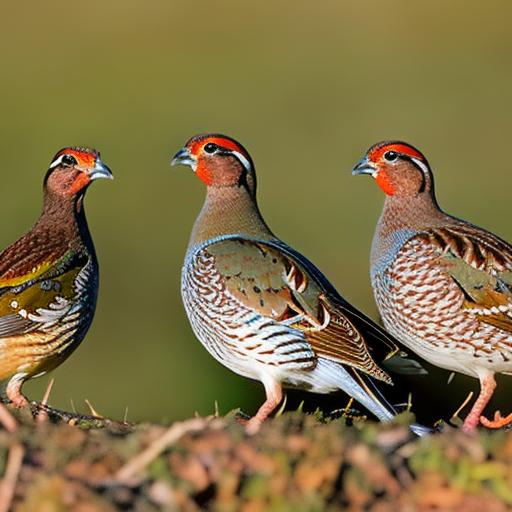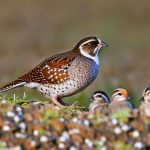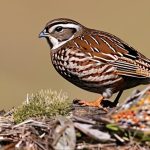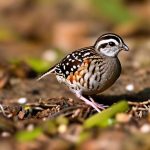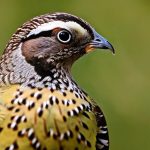Keeping quail and pheasants together can be a rewarding experience for poultry enthusiasts. Both quail and pheasants are popular game birds and are often raised for their meat and eggs. They are also known for their beautiful plumage and unique behaviors, making them a popular choice for hobbyists and breeders alike. While quail and pheasants have different care requirements, it is possible to keep them together in the same enclosure with proper planning and management. In this article, we will explore the compatibility of quail and pheasants, housing and enclosure requirements, feeding and nutrition, behavioral considerations, and health and disease management for these two species. By understanding the needs of both quail and pheasants, poultry keepers can create a harmonious environment for these birds to thrive.
Key Takeaways
- Quail and pheasants can be kept together, but it requires careful planning and consideration of their compatibility.
- Understanding the social and behavioral differences between quail and pheasants is crucial for successful cohabitation.
- Providing adequate housing and enclosure space is essential for the well-being of both quail and pheasants.
- A balanced diet with proper nutrition is important for the health and productivity of quail and pheasants.
- Monitoring and managing the behavioral dynamics and health of quail and pheasants is key to maintaining a harmonious environment for both species.
Understanding the Compatibility of Quail and Pheasants
Quail and pheasants can be compatible when kept together, but there are several factors to consider to ensure their well-being. One important consideration is the size of the enclosure. Quail are ground-dwelling birds that prefer to forage and nest on the ground, while pheasants are larger birds that prefer to roost in trees or on elevated perches. When designing an enclosure for both species, it is essential to provide ample space for both ground-dwelling and perching behaviors. Additionally, quail and pheasants have different social dynamics. Quail are known for their social nature and thrive in groups, while pheasants can be more territorial, especially during the breeding season. It is important to monitor the interactions between quail and pheasants to ensure that all birds have access to food, water, and shelter without being overly stressed by their cohabitation. Providing multiple feeding and watering stations can help reduce competition and aggression between the two species.
On the other hand, it is important to consider the potential for hybridization between quail and pheasants if they are kept together. Hybridization can occur when different species interbreed, leading to genetic dilution and potential health issues for the offspring. To prevent hybridization, it is crucial to keep quail and pheasants of different species separate or provide physical barriers, such as wire mesh, to prevent direct contact between the two species. By understanding the compatibility of quail and pheasants and taking proactive measures to address potential challenges, poultry keepers can create a harmonious environment for both species to coexist.
Housing and Enclosure Requirements for Quail and Pheasants
When keeping quail and pheasants together, it is essential to provide a suitable housing and enclosure that meets the needs of both species. Quail require a secure enclosure with a solid floor to prevent them from escaping or being preyed upon by predators. The enclosure should also have adequate ventilation to prevent respiratory issues and maintain good air quality. Additionally, providing hiding spots such as shrubs or low vegetation can help quail feel secure and reduce stress. Pheasants, on the other hand, require a larger enclosure with plenty of space to roam and fly. The enclosure should have high fencing to prevent pheasants from escaping and protection from predators.
In addition to space considerations, it is important to provide suitable nesting areas for both quail and pheasants. Quail prefer to nest on the ground in secluded areas, so providing nesting boxes or natural cover such as tall grass or shrubs can encourage nesting behavior. Pheasants, on the other hand, prefer to roost in trees or on elevated perches, so providing suitable roosting areas within the enclosure is essential. By understanding the housing and enclosure requirements for quail and pheasants, poultry keepers can create a safe and comfortable environment for both species to thrive.
Feeding and Nutrition for Quail and Pheasants
Feeding and nutrition are critical aspects of keeping quail and pheasants together. Quail are omnivorous birds that require a diet high in protein, such as game bird feed or a mixture of seeds, grains, and insects. It is important to provide access to grit or small stones to help quail grind their food in their gizzards. Additionally, offering supplemental sources of calcium, such as crushed oyster shells or eggshells, can help prevent calcium deficiencies in laying hens. Pheasants are also omnivorous birds with similar dietary requirements to quail. They require a diet high in protein, such as game bird feed or a mixture of seeds, grains, and insects. Pheasants also benefit from access to grit or small stones to aid in digestion.
When keeping quail and pheasants together, it is important to provide multiple feeding stations to reduce competition for food. Additionally, monitoring the feeding behavior of both species can help ensure that all birds have access to adequate nutrition without being outcompeted by more dominant individuals. Providing a balanced diet that meets the nutritional needs of both quail and pheasants is essential for their overall health and well-being.
Behavioral Considerations for Keeping Quail and Pheasants Together
Understanding the behavioral differences between quail and pheasants is essential for keeping them together successfully. Quail are social birds that thrive in groups and are known for their ground-dwelling behaviors such as scratching for food and dust bathing. They are also known for their vocalizations, which can vary depending on their age and sex. Providing suitable hiding spots and cover within the enclosure can help quail feel secure and reduce stress.
Pheasants, on the other hand, are more solitary birds that can be territorial, especially during the breeding season. They are known for their colorful plumage and elaborate courtship displays. Providing ample space within the enclosure can help reduce aggression between pheasants, especially during the breeding season. Additionally, providing suitable roosting areas such as trees or elevated perches can help meet the natural behaviors of pheasants.
When keeping quail and pheasants together, it is important to monitor their interactions closely to ensure that all birds have access to food, water, and shelter without being overly stressed by their cohabitation. Providing enrichment activities such as dust bathing areas, perches, and hiding spots can help meet the behavioral needs of both quail and pheasants.
Health and Disease Management for Quail and Pheasants
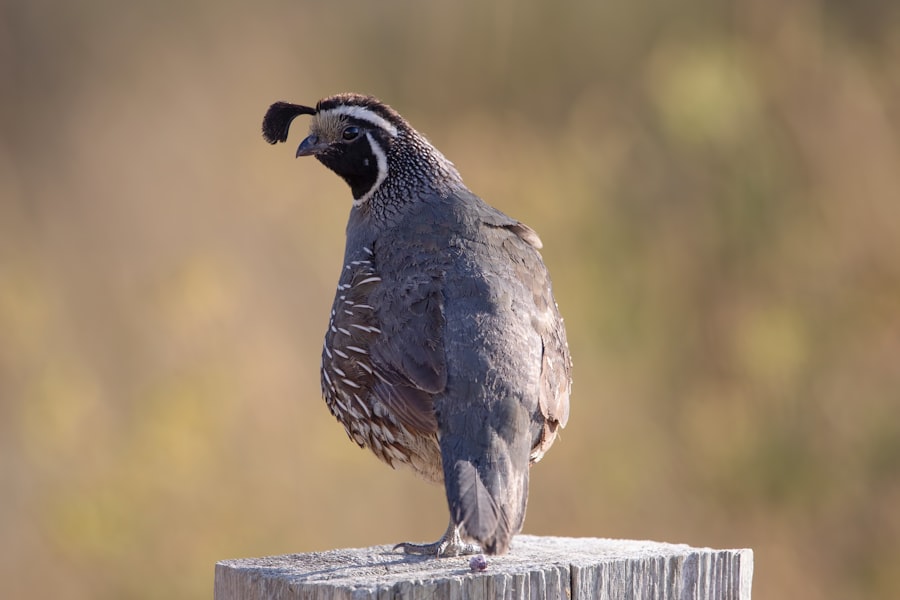
Maintaining the health of quail and pheasants is essential for their overall well-being when kept together. Regular health checks should be conducted to monitor the condition of the birds, including their plumage, weight, and behavior. It is important to provide a clean and dry environment within the enclosure to prevent issues such as respiratory infections or parasites.
Additionally, providing access to clean water at all times is essential for preventing dehydration and maintaining good health. Monitoring the water quality regularly can help prevent issues such as bacterial contamination or algae growth.
Disease management is also an important aspect of keeping quail and pheasants together. Quarantining new birds before introducing them to an existing flock can help prevent the spread of infectious diseases. Additionally, practicing good biosecurity measures such as disinfecting equipment and footwear can help reduce the risk of disease transmission between flocks.
It is important to work with a veterinarian who has experience with poultry to develop a health management plan for quail and pheasants. This may include regular vaccinations, parasite control, and treatment protocols for common poultry diseases.
Conclusion and Final Considerations for Keeping Quail and Pheasants Together
In conclusion, keeping quail and pheasants together can be a rewarding experience for poultry enthusiasts when done with careful consideration of their compatibility, housing needs, feeding requirements, behavioral considerations, and health management. By understanding the unique needs of both species and providing suitable accommodations within the enclosure, poultry keepers can create a harmonious environment for quail and pheasants to thrive.
It is important to monitor the interactions between quail and pheasants closely to ensure that all birds have access to food, water, shelter without being overly stressed by their cohabitation. Providing enrichment activities such as dust bathing areas, perches, hiding spots can help meet the behavioral needs of both quail and pheasants.
Finally, working with a veterinarian who has experience with poultry can help develop a comprehensive health management plan for quail and pheasants that includes regular health checks, disease prevention measures, and treatment protocols when necessary. By taking these considerations into account, poultry keepers can create a successful environment for keeping quail and pheasants together.
If you’re considering keeping quail and pheasants together, it’s important to understand the specific needs of each species. For more information on creating a suitable environment for different types of poultry, check out this article on Producers Pride Sentinel Chicken Coop. Understanding the best practices for housing and caring for chickens can provide valuable insights into how to accommodate quail and pheasants in the same space.
FAQs
Can quail and pheasants be kept together in the same enclosure?
No, it is not recommended to keep quail and pheasants together in the same enclosure. They have different housing and environmental requirements, and may not get along well together.
What are the housing requirements for quail and pheasants?
Quail and pheasants have different housing requirements. Quail require a smaller, more secure enclosure with plenty of ground cover, while pheasants need a larger, more open space with access to trees and shrubs.
Do quail and pheasants have different dietary needs?
Yes, quail and pheasants have different dietary needs. Quail typically eat a diet of seeds, insects, and greens, while pheasants require a diet that includes a higher protein content and more variety of grains and seeds.
Can quail and pheasants coexist in the same aviary?
It is not recommended to house quail and pheasants together in the same aviary. They have different social behaviors and may not get along well together, leading to potential aggression and stress.
What are the potential risks of keeping quail and pheasants together?
Keeping quail and pheasants together can lead to competition for resources, aggression, stress, and potential injury to the birds. It is best to provide separate housing for each species to ensure their well-being.
Meet Walter, the feathered-friend fanatic of Florida! Nestled in the sunshine state, Walter struts through life with his feathered companions, clucking his way to happiness. With a coop that’s fancier than a five-star hotel, he’s the Don Juan of the chicken world. When he’s not teaching his hens to do the cha-cha, you’ll find him in a heated debate with his prized rooster, Sir Clucks-a-Lot. Walter’s poultry passion is no yolk; he’s the sunny-side-up guy you never knew you needed in your flock of friends!

